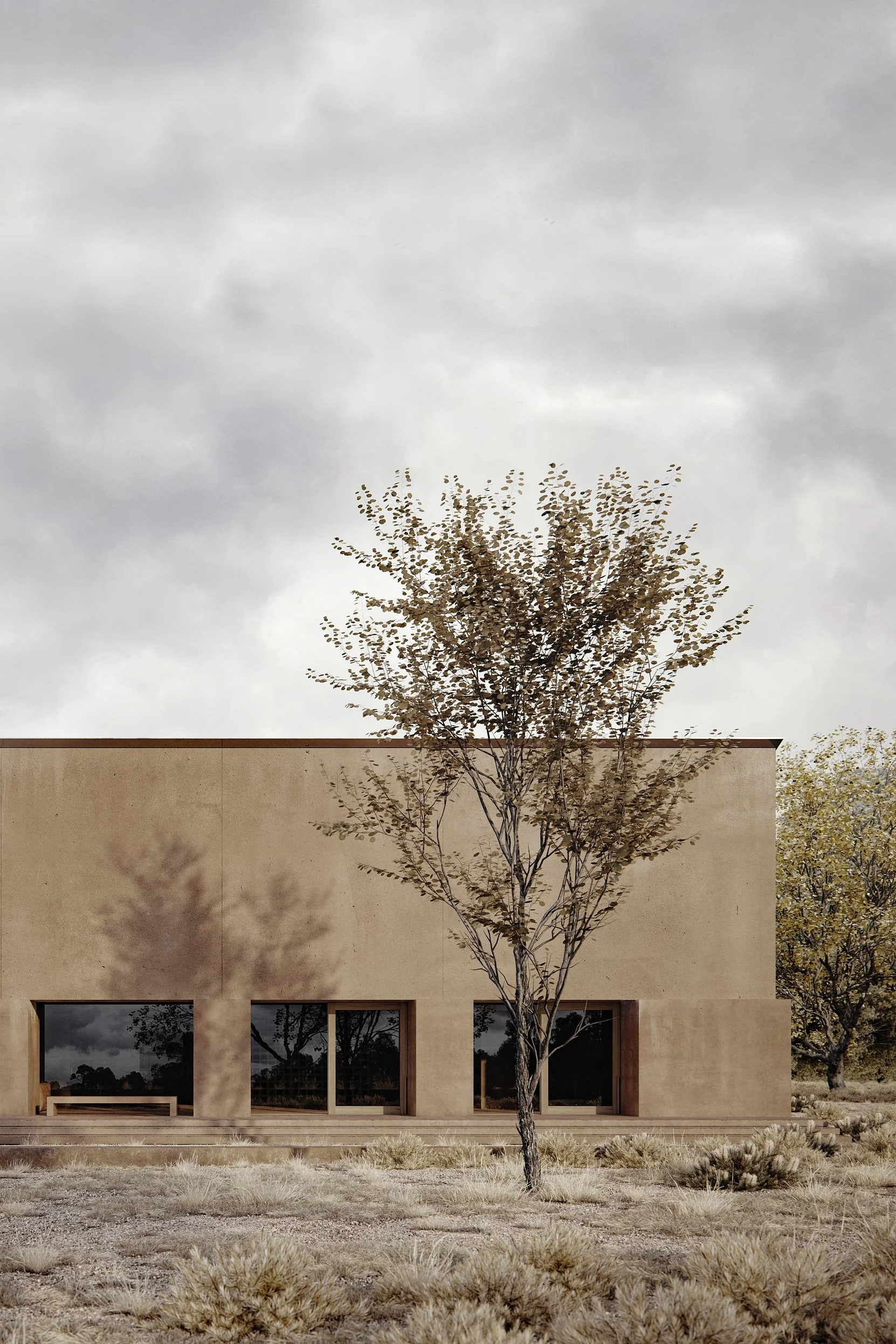This series offers a glimpse into the ideas that shape our work: the role of time, the behaviour of materials, the pursuit of feeling over formality.
Not manifesto, but meditation; a way of sharing what we value, and how we design for life as it is truly lived.
In architecture, the conversations that shape a project often live beneath the surface; decisions about materiality, time, feeling, and restraint that are rarely seen, but deeply felt.
What is a material you love more once it has aged?
Quality, natural materials, detailed with sensitivity and understanding have the rare ability to improve with time. Sun, wind, rain, and the human hand all leave their mark. Materials like leather and timber soften and darken through use; concrete limes and discolours as it settles into place; metals like brass and steel patinate, deepening in richness.
Fresh concrete can look good; but it only feels resolved once it has weathered, begun to lime, and absorbed the atmosphere of its setting. As ivy finds its way across the surface, or rain carves faint patterns, the building begins to feel inevitable. A similar story can be told of brass, steel, and stone. They find their full expression through time, not despite it.
Can you describe a favourite moment when a material surprised you over time?
Travertine is a material we return to often. Its natural pores and pits often lead to questions: should they be filled or left open? Our preference is to leave them exposed. Over time, dust and fine debris naturally settle into the voids, subtly darkening the surface and softening its overall appearance. It is a process that brings an authenticity and depth no synthetic material can replicate. Rather than resisting the character of the stone, time reveals it.
Why is imperfection beautiful in architecture?
Architecture holds space for both perfection and imperfection. Embracing the natural weathering of materials introduces time as a deliberate ingredient in the design. Ageing, patination, and imperfection allow a building to feel more human, connected to its environment and its occupants, rather than frozen at the moment of completion.
How do you design for patina? Do you invite it rather than resist it?
Designing for patina begins with a respect for durability and appropriateness. This operates at every scale: from the choice of wall finishes that will soften with exposure, to a stair tread subtly rounded in anticipation of decades of wear. Some signs of age are celebrated openly; others, such as the softening of a well-used threshold, are anticipated quietly through careful detailing.
If you had to choose: perfect crispness forever, or graceful ageing? Why?
Architecture is not static. Buildings are prototypes of human imagination, crafted by hand rather than machine. Pursuing the illusion of perfect crispness often leads to fragility and disappointment.
We design with an understanding that craft, buildability, and the realities of time are not constraints but opportunities. In that light, graceful ageing is not simply accepted, it is invited.



